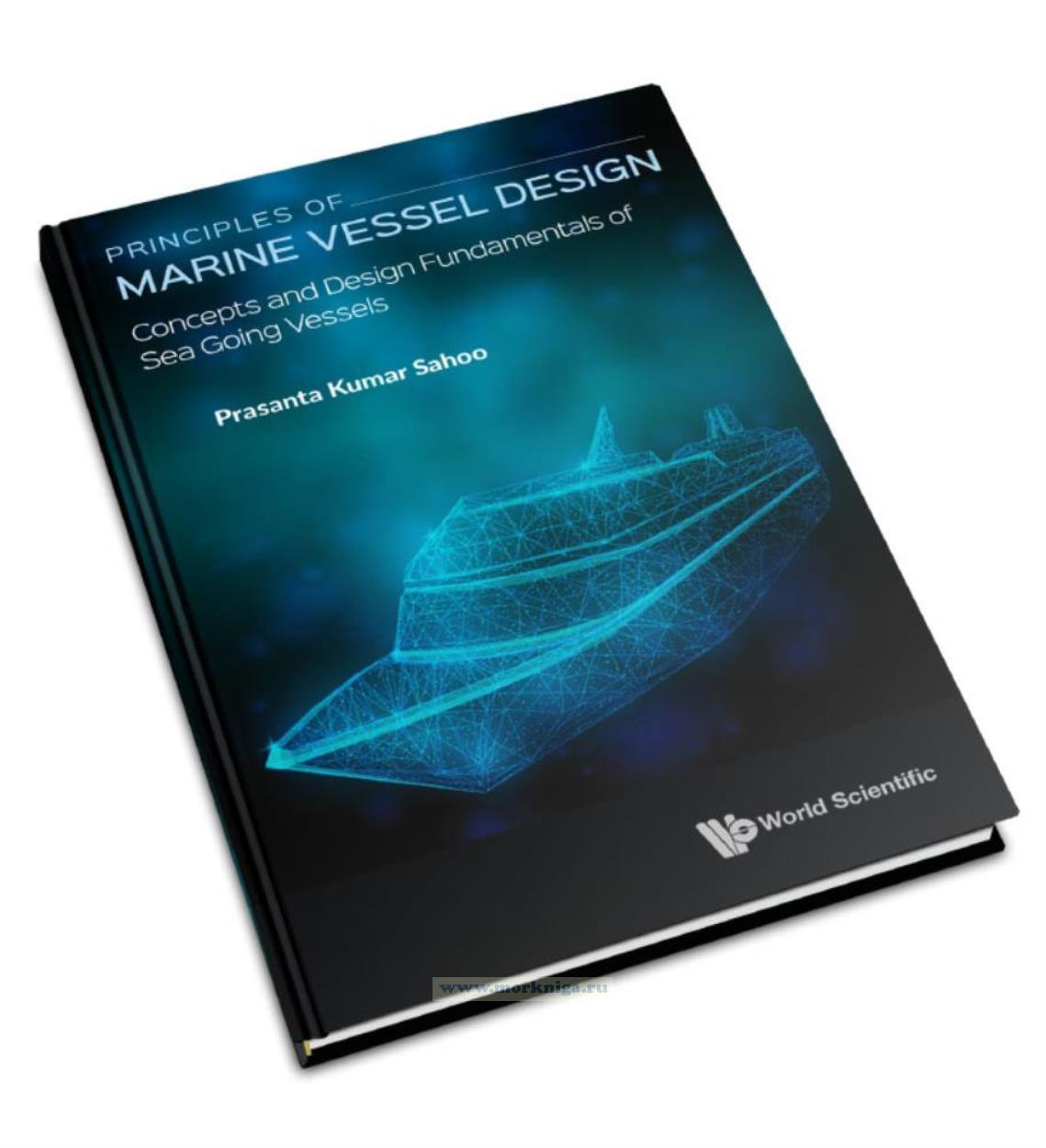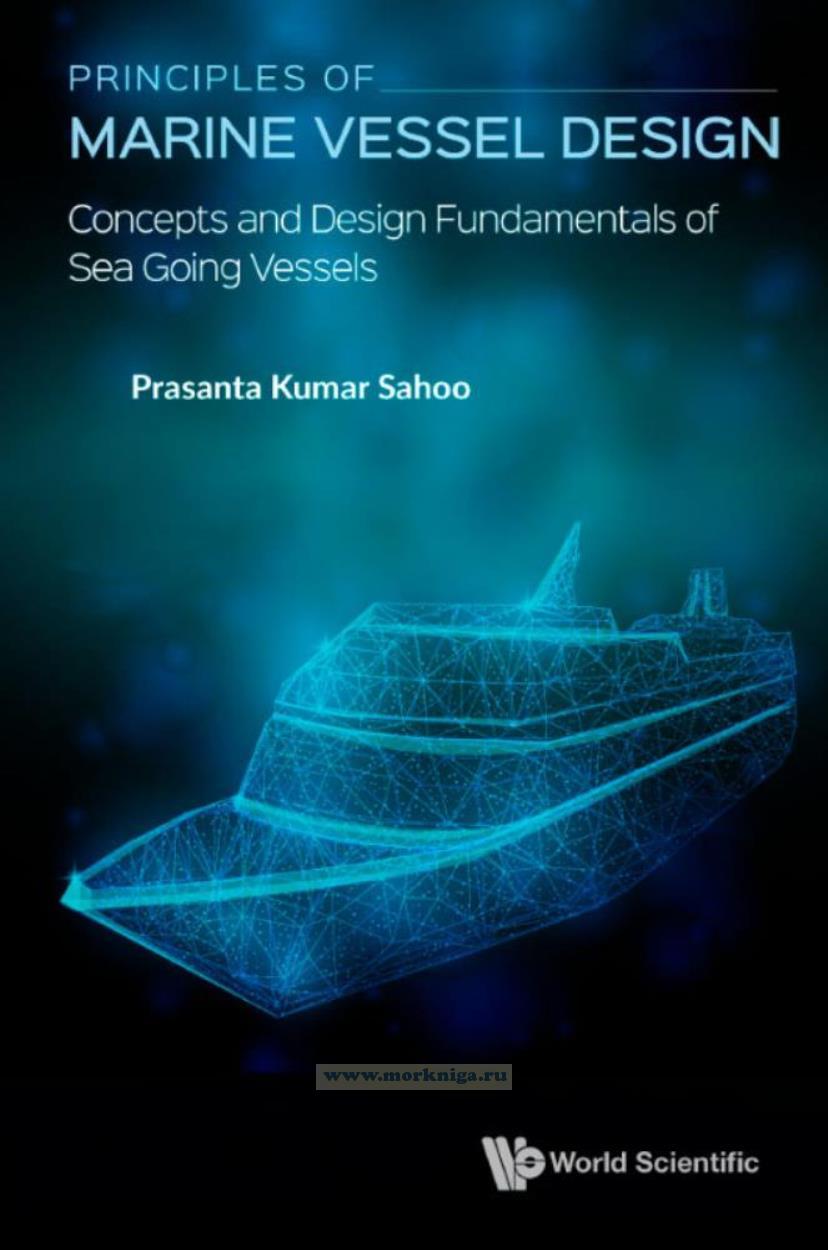Principles of Marine Vessel Design/Принципы проектирования конструкций корпуса судна
Книга на английском языке.
The aim and scope of this book primarily deals with conceptual design of sea-going marine vessels. While there are a few books on similar topics available to the reader, this book takes a different approach to address the developments of many different types of vessels. Of significant interest would be the estimation of principal parameters of such as vessels and the various coefficients required for design purposes. These parameters are obviously not readily available without carrying out an extensive search and background study. Hopefully, this textbook may be of relevance to designers and career naval architects who need a reference to initiate the design process.
Contents
Preface
List of Figures
List of Tables
List of Abbreviations and Symbols Used
Chapter 1. Design Process Overview
1.1 Introduction
1.2 Design spiral
1.3 Concept design
1.4 Detailed design
1.5 Mission requirements
1.6 Mission statement example: concise
1.7 Mission statement example: detailed
1.8 Design fundamental considerations
1.9 Specific design requirements
1.10 Operational upkeep
1.11 Manning specifications
1.12 Classification societies
Chapter 2. General Cargo Ship
2.1 Introduction
2.2 Specifications of the design
2.3 Important parameters
2.4 Initial estimate of stability
2.4.1 Vertical centre of buoyancy KB
2.4.2 Metacentric radius: BMT and BML
2.4.3 Transverse stability
2.4.4 Longitudinal stability
2.4.5 Longitudinal centre of buoyancy
Chapter 3. Container Ships
3.1 Introduction
3.2 Specifications of the ship
3.2.1 Midship section of container ships
3.2.2 Torsion box in double hulled container ships
3.2.3 Stowage of containers
3.3 Important parameters
3.4 Initial estimate of stability
3.4.1 Vertical centre of buoyancy KB
3.4.2 Metacentric radius: BMT and BML
3.4.3 Transverse stability
3.4.4 Longitudinal stability
3.4.5 Longitudinal centre of buoyancy
3.5 Some equations for container ships
Chapter 4. Bulk Carrier
4.1 Introduction
4.2 Important parameters
4.3 Initial estimate of stability
4.3.1 Vertical centre of buoyancy KB
4.3.2 Metacentric radius: BMT and BML
4.3.3 Transverse stability
4.3.4 Longitudinal stability
4.3.5 Longitudinal centre of buoyancy
Chapter 5. Tankers
5.1 Introduction
5.2 Crude oil tankers
5.3 Initial estimate of stability
5.3.1 Vertical centre of buoyancy KB
5.3.2 Metacentric radius: BMT and BML
5.3.3 Transverse stability
5.3.4 Longitudinal stability
5.3.5 Longitudinal centre of buoyancy
Chapter 6. Offshore Supply Vessels
6.1 Introduction
6.2 Mission & design constraints
6.2.1 Seismic survey ship
6.2.2 Platform Supply Vessel (PSV)
6.2.3 Anchor Handling Tug Supply Vessel (AHTS)
6.2.4 Design aspects and additional features
6.2.5 Construction support vessels
6.2.6 Diving Support Vessel (DSV)
6.2.7 Inspection Maintenance and Repair (IMR) vessel
6.2.8 ROV support vessels
Chapter 7. Tugs
7.1 Introduction
7.1.1 Types of tugboats
7.1.1.1 Deep-sea tugs
7.1.1.2 Harbor tugboats
7.1.1.3 River tugboats
7.1.2 Important parameters
7.1.3 Initial estimate of stability
7.1.3.1 Vertical centre of buoyancy KB
7.1.3.2 Metacentric radius: BMT and BML
7.1.3.3 Transverse stability
7.1.3.4 Longitudinal stability
7.1.4 Tugboat propulsion
Chapter 8. Trawlers
8.1 Introduction
8.1.1 Fishing trawler
8.1.2 Recreational trawler/trawler boats/trawler yachts
8.1.3 Naval trawlers
8.1.4 Seakeeping criteria
Chapter 9. SWATH Ships
9.1 Introduction
9.2 Design and construction
9.2.1 Additional design aspects
9.3 Important parameters
Chapter 10. Surface Effect Ships
10.1 Introduction
Chapter 11. Submarines
11.1 Introduction
11.2 Parts of a submarine
11.2.1 Outer hull and pressure hull .
11.2.2 Main Ballast Tanks (MBTs)
11.2.3 Control surfaces/planes
11.2.4 Sail or bridge fin
11.3 Engine
11.4 General arrangement of a submarine
11.5 Influence of some general hull parameters
11.5.1 Fineness ratio
11.5.2 Prismatic coefficient
11.5.3 Nose radius
11.5.4 Speed
Chapter 12. Catamaran
12.1 Introduction
12.2 Performance characteristics
12.2.1 Stability
12.2.2 Resistance
12.2.3 Trade offs
Chapter 13. Trimaran
13.1 Introduction
Chapter 14. Pentamaran
14.1 Introduction
14.2 Types of pentamaran
14.2.1 Parallel type
14.2.2 Outrigger type
Chapter 15. Air Cushioned Vehicles (ACVs)
15.1 Introduction
15.2 Specifications
15.2.1 Amphibious hovercraft
15.2.2 Non-amphibious hovercraft
15.2.3 Hybrid hovercraft
15.3 Hovercraft design considerations
15.4 Power requirements
15.4.1 Lift power
15.4.2 Propulsive power
Chapter 16. Conclusion
Appendix
References
Index

